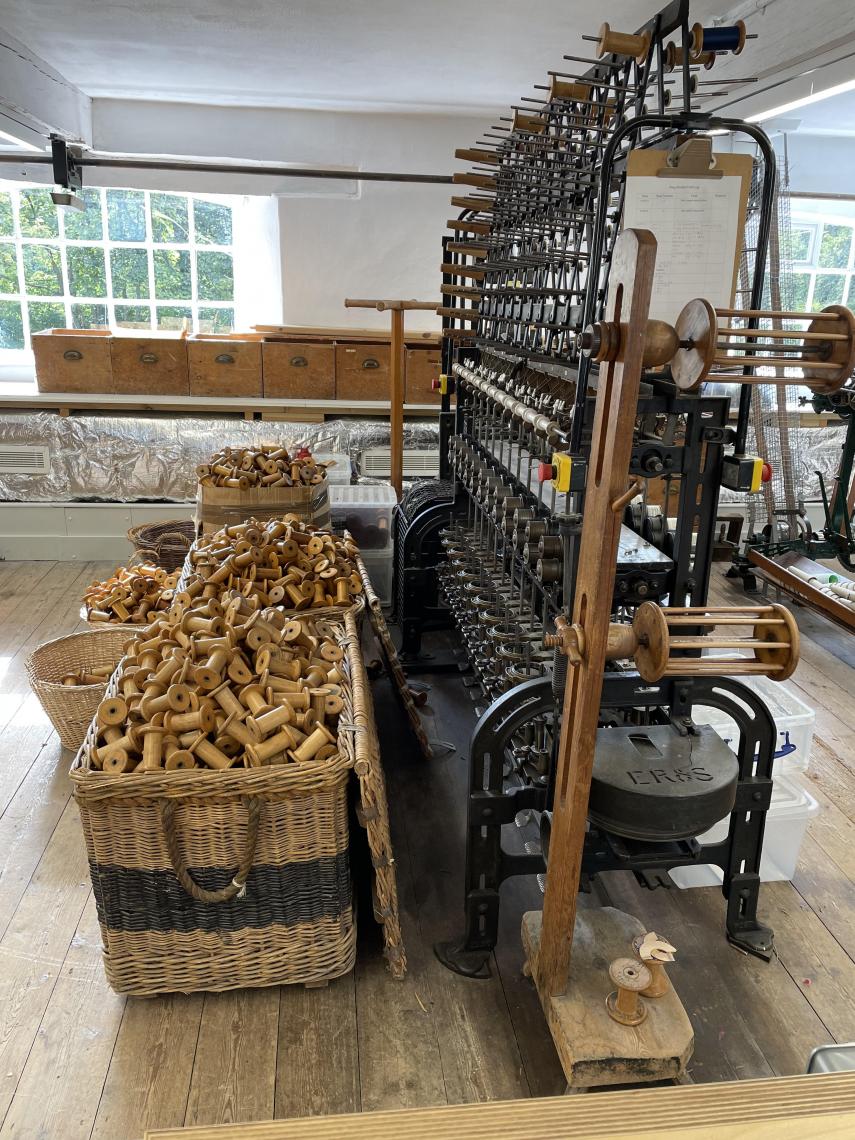Company Social - 22nd September 2021
The sun came out for the latest Broderers’ social event! The day started at the Bombay Sapphire Distillery, Laverstoke Mill near Whitchurch in Hampshire. The site was once a paper mill that produced paper for banknotes first by the Portal family and more recently by De la Rue when they also bought the Whitchurch site. Papermaking continued on the site until 1963.
In 2010 the site was bought by the Bombay Spirits Company and in 2014, they opened the doors to the public, keen to learn about the finer details of gin.
Who knew that making gin is actually alchemy – up to 12 different botanicals, suspended above the warm spirit in copper baskets and as the heated spirit vapours rise they are gently infused with all the aromatic flavours that makes up Bombay Sapphire gin. No boiling here! We had the opportunity to sniff the botanicals and the general opinion was they were definitely better infused in the gin rather than as the raw material, some of which did not even smell that pleasant!
As “plain dealing fellows” we were keen to test the infusion process and using our insights and sniffs we each selected a cocktail from a list that highlighted different characteristics of gin. And for the loved ones who were not able to join the trip – there was the shop and a number of bags were noticed being spirited (pun definitely intended!) into cars before the short drive to the Whitchurch Silk Mill for lunch.
It turns out that Liveryman Charles Carr’s father – Bill Carr, had at one time been Manager of the Silk Mill so during lunch the current manager took the opportunity to share some archive publicity materials that featured Bill. And to prove that the Broderers really are a family, Bill’s cousin Bill Button was a two time Master of the Company in 1956/7 and again 1969/70.
 |
Charles is seen here with Silk Mill Director Sue Tapliss and Freeman Sarah de Rousset-Hall. |
Despite many changes of ownership of the Mill, silk weaving has continued in various forms since 1815. In the first half of the 20th century, silk was woven here for the lining of Burberry raincoats; by 1971 the Mill was making silk for academic and legal gowns but by 1985 the Mill had fallen into a state of disrepair and the Hampshire Buildings Preservation Trust took over, opening as a working museum in 1990.
Most of the equipment used today has a past – the oldest dating back to 1890. The traditional processes for weaving used at Whitchurch do not make for a fast production timetable – the setting up of a loom for a new production can take up to three weeks and that’s before any weaving can start! Silk arrives at the Mill in hanks and needs to be wound onto bobbins that can involve several stages.
 |
Boxes of wooden bobbins can be seen here waiting to be used. |
We were lucky enough to see a loom in use operated by the Weaver Tackler (means supervisor, rather than any rugby connotation) and Apprentice Weaver, while the Master Weaver was setting up the warp for a new production run.
 |
Broderers watching others at work! |
Hand-woven silk might be seen as expensive but it’s also true that good things come to those who wait. We had a thoroughly enjoyable day and left the Mill knowing that these heritage skills are in safe hands at Whitchurch, confident they are being passed on to the Master craftsmen of tomorrow.
23 September 2021
